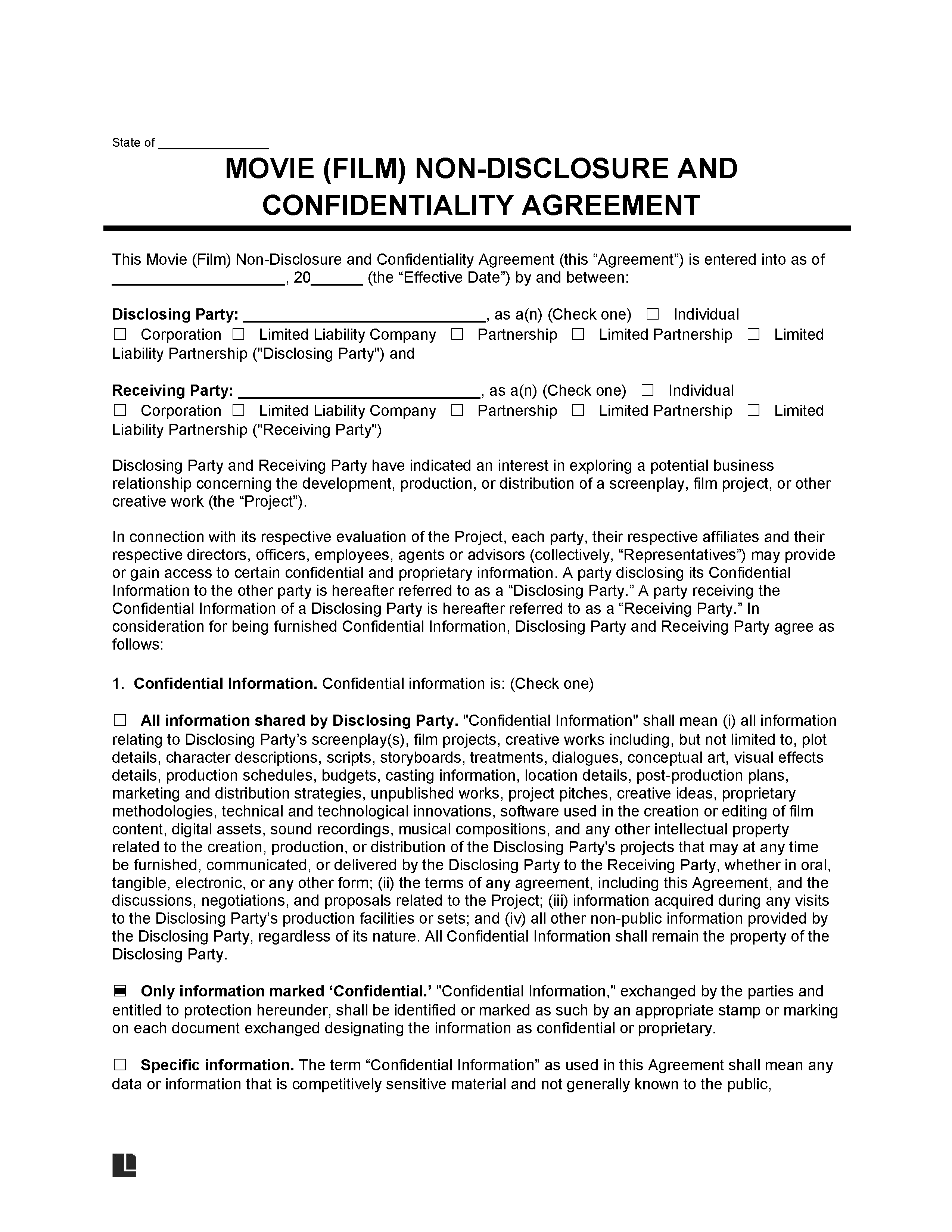What Is a Non-Disclosure Agreement (NDA) in Film?
In film, a non-disclosure agreement is a legal contract that keeps sensitive information private. It protects scripts, plot details, and other project information from leaking, which is especially important with spoilers spreading so quickly online.
NDAs are common during casting and production, but they often go beyond storylines. Many also cover actors’ personal lives, on-set relationships, and sensitive or offensive material. Some even include strict terms that limit what actors can say outside of work.
Productions usually require crew, employees, and contractors to sign NDAs because they need access to confidential details to do their jobs. These agreements can take different forms:
- Most film NDAs are unilateral, meaning the production protects its information and the signer agrees to keep it secret.
- Mutual NDAs are less common and usually used between production companies or business partners sharing information both ways.
The terms depend on the production. Commercials, documentaries, and feature films all face different risks. Some movie non-disclosure agreements are narrow and focus on project-specific details.
Others, like those from Leonardo DiCaprio’s company, for instance, have broad rules that cover almost everything connected to the work.
How Long Do Film NDAs Last?
Most movie non-disclosure agreements last until the project is released to the public, usually for one to two years. Once the release happens, secrecy requirements often end because the information is no longer private.
Some agreements go beyond that. Productions with long-term campaigns or special projects may need extended confidentiality to protect sensitive or ongoing details well after release.
In rare cases, actors sign movie NDAs with very long-lasting or even perpetual restrictions. These are usually tied to high-profile or sensitive projects where privacy remains important indefinitely.
A few factors can affect the length of a film production non-disclosure agreement:
- The type of project and its release strategy
- Whether the information stays sensitive after release
- The level of risk if details are revealed too soon
When to Use a Film NDA
A movie non-disclosure agreement is important any time a leak could harm the project. Leaks can happen in the most unexpected ways, and even big productions are not immune. One famous example is when John Boyega’s Star Wars script ended up on eBay.
Give NDAs to actors before auditions or table reads. Attach them to every script, storyboard, schedule, and budget you share. They’re especially important for big franchises, streaming shows, and projects with surprise endings.
One film production non-disclosure agreement can cover prep, shooting, and post-production. Make sure everyone signs, including visitors, journalists, vendors, and friends. Only skip an NDA if every key detail is already public, which is rare.
NDAs Can Keep Secrets for Years
David Henrie, who played Ted’s son on How I Met Your Mother, knew the show’s ending long before it aired. Fans even tried bribing him with drinks to get the secret out. He stayed quiet because of a strict NDA he signed early on, proving how effective these agreements are at protecting plot points.
What to Include in a Film NDA
A strong movie non-disclosure agreement should make clear what’s off-limits, who’s signing, and how long the secrecy lasts.
-
Define your confidential information by listing exactly what must stay private, such as:
- Scripts (full or partial), alternate endings, and plot twists
- Unannounced casting decisions, audition tapes, and rehearsal footage
- Stunt plans, special effects techniques, and makeup or costume designs
- Prop lists, set blueprints, location agreements, and shooting schedules
- Budgets, marketing plans, and unreleased promotional materials
-
Identify everyone involved with full legal details (e.g., registered business name, address, or ID number), noting whether they’re an individual or a company. This might be:
- On one side: a production company, director, or producer
- On the other side: an actor, crew member, post-production vendor, or PR agency
- Pick the law that applies to the NDA, often the state where the production company is based or where filming takes place, like California or Georgia.
- Set the start date for when confidentiality begins—usually before table reads, location scouting, fittings, or the first time scripts or footage are shared.
-
Decide how long confidentiality lasts, whether:
- Until the film’s release
- For a set number of years afterward
- Indefinitely for sensitive material like proprietary effects techniques
- Clarify what happens when it ends, including which details (like a major plot twist) must stay secret forever.
Movie (Film) Non-Disclosure Agreement Sample
Take a look at our sample film non-disclosure agreement template to see exactly how the key clauses come together. When you’re ready, download it in PDF or Word and tailor it to keep your production secrets under wraps.



